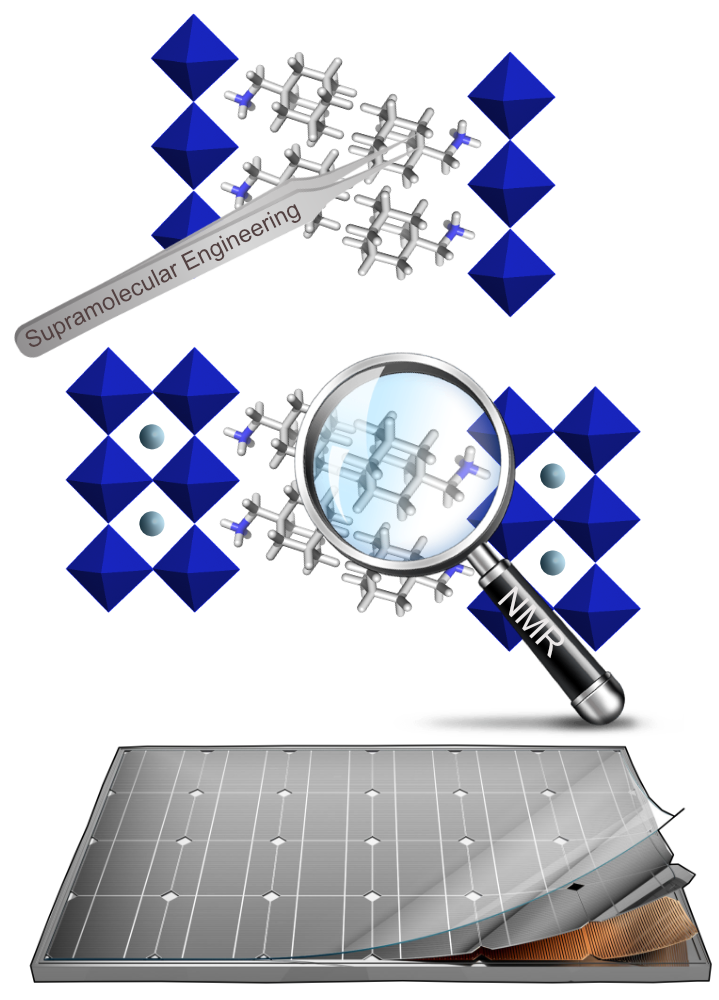A Supramolecular Approach to Hybrid Perovskite Photovoltaics
Hybrid perovskites have recently emerged as one of the leading materials in thin-film photovoltaics due to their remarkable solar-to-electric power conversion efficiencies.[1-2] However, their limited stability under device operation conditions remains challenging.[1-2] In contrast, low-dimensional perovskite analogs have shown promising operational stabilities.[3-7] We demonstrate a strategy to provide stabilization of hybrid perovskite solar cells without compromising their performance through fine-tuning various noncovalent interactions (i.e. supramolecular engineering),[7-10] such as metal coordination,[10] hydrogen[6,9-10] or halogen bonding,[8] and π-interactions,[7] at the interface with active perovskite materials in a manner uniquely assessed by solid-state NMR spectroscopy.[5-6,8-10] As a result, we obtain perovskite solar cells featuring superior photovoltaic performances, accompanied by enhanced operational stabilities.[6-10] Moreover, the formation of layered perovskite architectures enables further stability enhancements.[3-7] This has been investigated using a combination of techniques complemented by solid-state NMR to unravel the underlying design principles and exemplify the potential of this supramolecular approach in advancing hybrid perovskite photovoltaics.

Schematic representation of low-dimensional perovskites and the corresponding solar cells
[1] J. V. Milić et al. Chimia 2019, 73, 317; [2] M. Graetzel et al. Substantia 2019, 3, 27; [3] Y. Li et al. Nano Lett. 2019, 19, 150; [4] J. V. Milić et al. Adv. Energy Mater. 2019, 1900284;
[5] L. Hong, et al. Angew. Chem. Int. Ed. 2020, doi:10.1002/anie201912051; [6] A. Q. Alanazi, et al. J. Am. Chem. Soc. 2019, 141, 17659; [7] Y. Liu et al. Sci. Adv. 2019, 5, eaaw2543;
[8] M. A. Ruiz-Preciado et al. J. Am. Chem. Soc. 2020, doi:10.1021/jacs.9b13701; [9] M. M. Tavakoli et al. Energy Environ. Sci. 2018, 11, 3310; [10] D. Bi et al. Nat. Commun. 2018, 9, 4482.